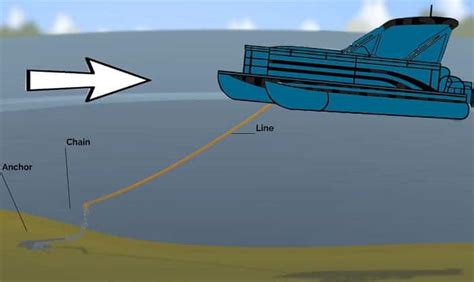Anchoring Your Pontoon: Safety First
Pontoon boats offer a relaxing way to enjoy the water, but safe anchoring is crucial for a peaceful and secure experience. Improper anchoring can lead to damage to your pontoon, other boats, or even injury. This guide will cover essential techniques and safety considerations for securely anchoring your pontoon boat.
Why is Proper Anchoring Important?
Before diving into the specifics, let's understand why proper anchoring is paramount. A poorly set anchor can result in:
- Damage to your pontoon: Dragging across the bottom can scrape the hull and damage the pontoons themselves.
- Collisions with other boats: A loose anchor can allow your pontoon to drift into other vessels, causing damage and potential conflict.
- Environmental damage: Dragging anchors can damage underwater ecosystems, including sensitive plant life and habitats.
- Personal injury: If your pontoon drifts unexpectedly, it could result in injuries to those on board or nearby.
- Loss of your boat: In strong currents or winds, a poorly set anchor can result in your boat drifting away and becoming lost or damaged.
Choosing the Right Anchor for Your Pontoon
Selecting the appropriate anchor is the first step towards safe anchoring. Several factors influence your choice:
- Pontoon size and weight: Larger and heavier pontoons require larger and stronger anchors.
- Bottom type: The type of lake or riverbed (mud, sand, rock, weed beds) will determine the best anchor design. A mushroom anchor works well in mud or sand, while a claw anchor grips better in rockier areas.
- Water depth: You'll need an anchor with sufficient length of rode (anchor rope or chain) to reach the bottom and provide sufficient holding power.
Consider these anchor types:
- Mushroom anchors: Ideal for softer bottoms like sand and mud. Their large surface area provides good holding power.
- Claw anchors: Excellent for rocky or weedy bottoms. Their sharp points dig into the substrate for a secure grip.
- Danforth anchors: A good all-around choice that works reasonably well in various bottom types, but might not be as effective as specialized anchors in extreme conditions.
How to Anchor Your Pontoon: A Step-by-Step Guide
Follow these steps for a secure and safe anchoring experience:
- Choose your location: Select a spot away from navigation channels, boat ramps, and other hazards. Consider the wind and current direction; anchor in a way that will prevent drifting into these areas.
- Motor slowly upwind or upstream: This helps you control your approach and prevent dragging the anchor before it's fully set.
- Drop the anchor: Once you've reached your desired location, slowly drop the anchor over the bow.
- Pay out sufficient rode: Use a ratio of at least 5:1 (five times the water depth). This allows the anchor to dig in properly and absorb shock. More rode is better in windy or current-heavy conditions. Consider using a combination of rope and chain; chain provides better holding power and abrasion resistance on the bottom.
- Check for a secure hold: Once the anchor is set, give it a good tug to ensure it's holding. If it feels loose, retrieve it and try again in a slightly different location.
- Mark your position: Use a navigation buoy or marker to easily locate your anchor when it’s time to leave.
What if I'm Anchoring in Strong Winds or Currents?
In challenging conditions, you'll need to take extra precautions:
- Use a larger anchor: A heavier anchor and more rode are essential for secure hold.
- Consider multiple anchors: Setting two anchors at a wide angle (fore and aft) can significantly increase holding power and prevent swinging.
- Use a stern anchor: Additionally, a stern anchor can help keep the boat steady.
- Monitor your position: Regularly check your position to ensure you're not drifting.
How to Retrieve Your Anchor
Retrieving your anchor safely is just as important as setting it:
- Motor slowly towards the anchor: This allows you to avoid tangling the rode.
- Retrieve the rode slowly and steadily: Avoid jerking or yanking, which could damage the anchor or your boat.
- Clear any debris: Remove any seaweed, mud, or other debris from the anchor before storing it.
What About Other Anchoring Questions?
How much anchor rope should I use?
As mentioned earlier, a 5:1 ratio of rode to depth is a good starting point, but more is always preferable in challenging conditions.
What type of rope is best for anchoring?
Nylon rope is a popular choice due to its strength and flexibility. However, many people prefer using chain for the final portion closest to the anchor for abrasion resistance.
Can I anchor in deep water?
While technically possible, anchoring in extremely deep water can be challenging. You’ll need a very long rode and a substantial anchor to be confident in its hold.
Safe anchoring is vital for enjoyable pontoon boating. By following these guidelines and prioritizing safety, you can create a relaxing and secure experience on the water for yourself and your passengers. Remember, a well-chosen anchor and proper technique are your best defense against unpleasant surprises.

